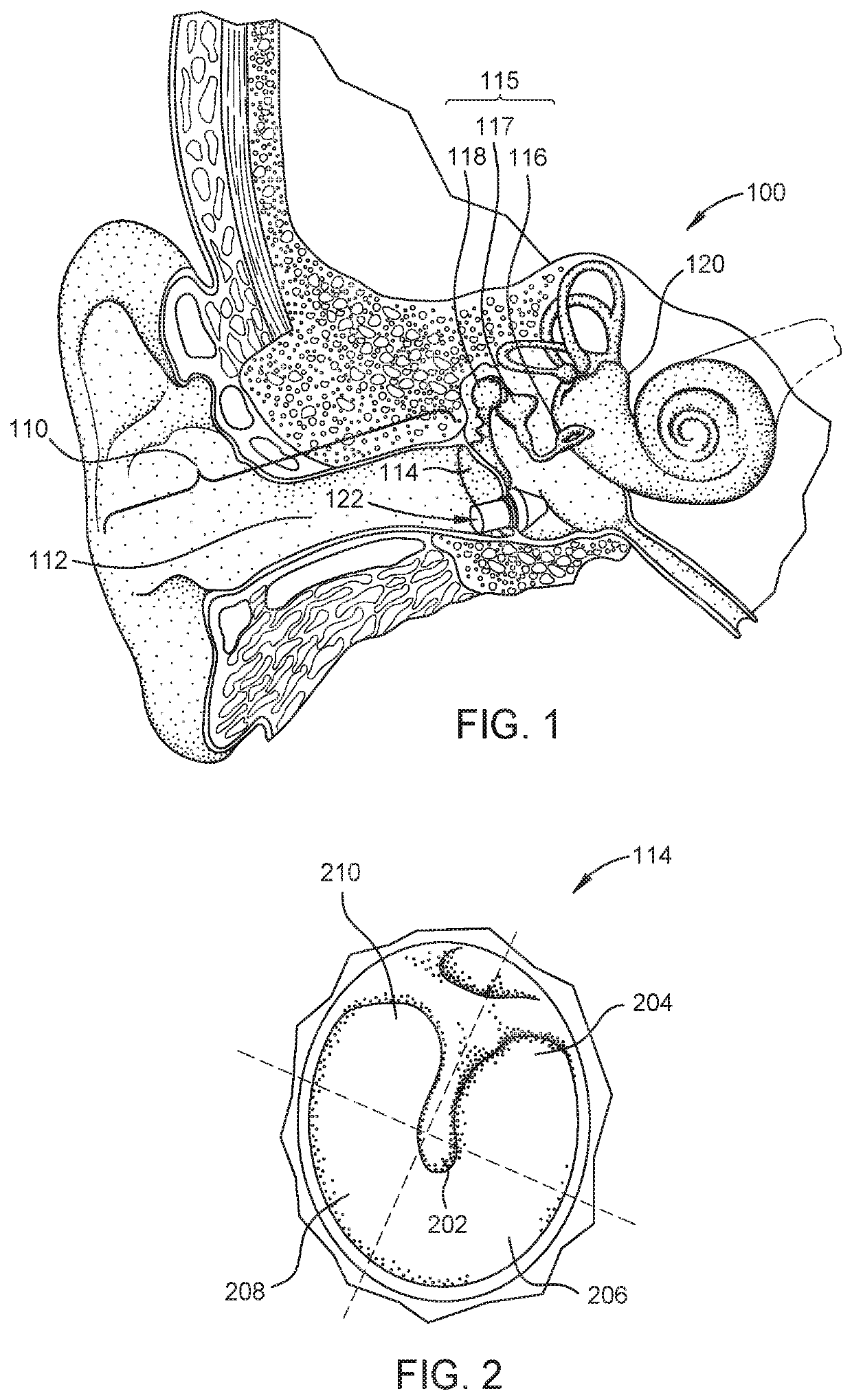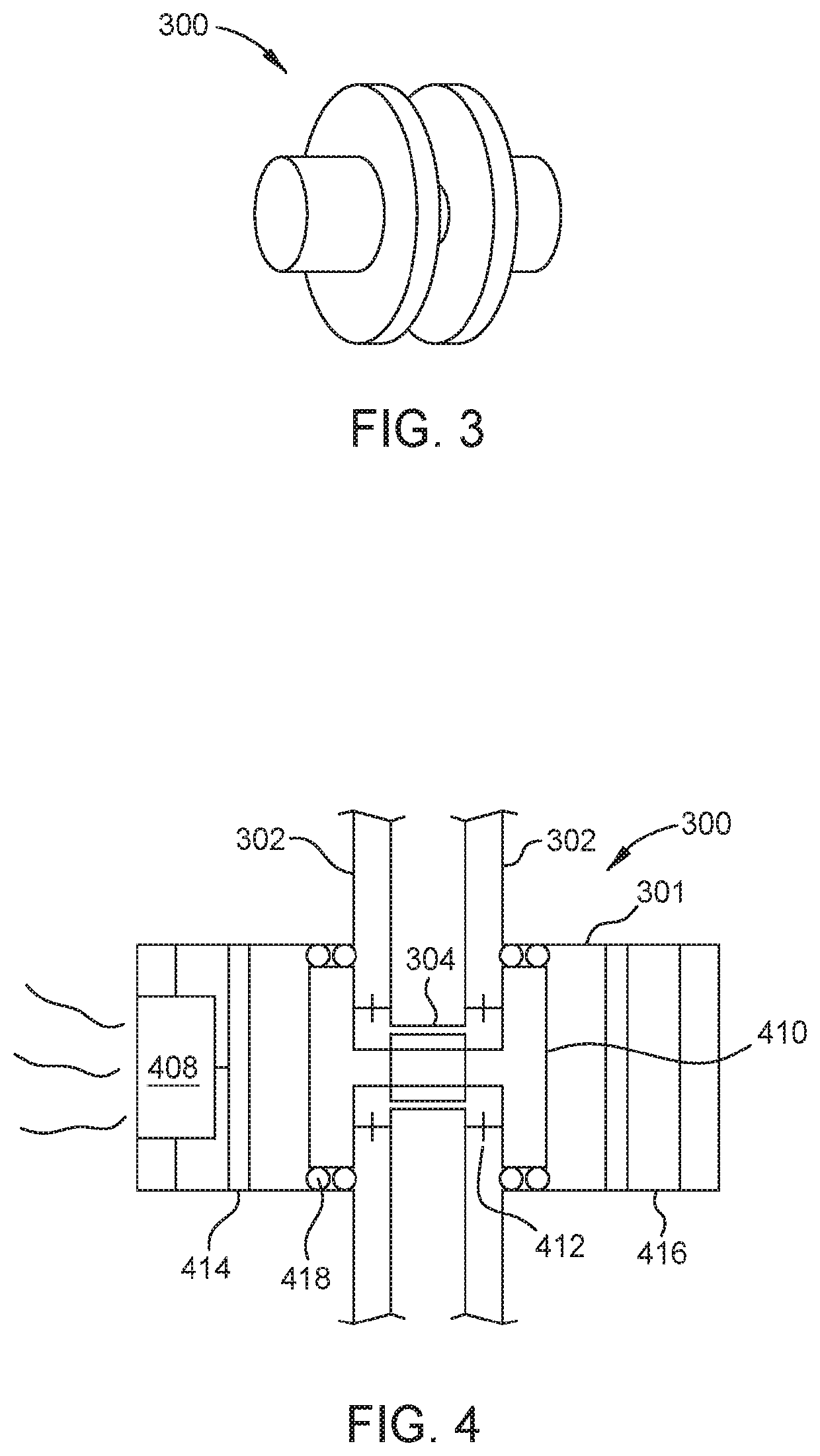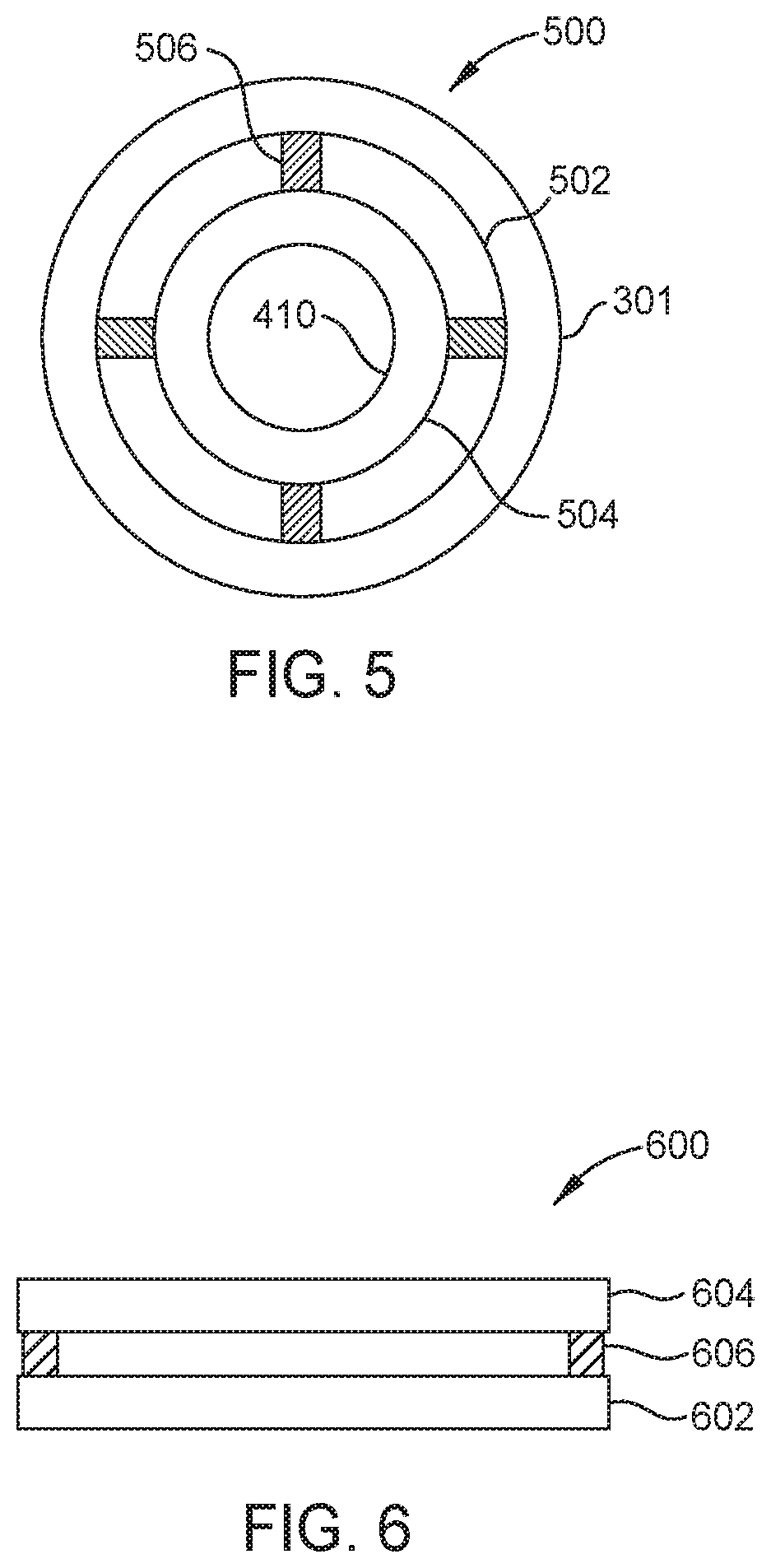Compact hearing aids
a hearing aid and compact technology, applied in the field of hearing aids, can solve the problems of ear infections, excessive ear wax production in the ear canal of the user's body, and relatively bulky and objectionable external mounting hearing aids
- Summary
- Abstract
- Description
- Claims
- Application Information
AI Technical Summary
Benefits of technology
Problems solved by technology
Method used
Image
Examples
Embodiment Construction
[0036]The present disclosure relates to compact hearing aids, components thereof, and support systems therefor, as well as methods of insertion and removal thereof. The compact hearing aids generally include a sensor, such as a microphone, an actuation mass, an energy source for providing power to the compact hearing aid, a processor, and an actuator enclosed in a housing that is designed to be inserted through the tympanic membrane during a minimally-invasive outpatient procedure. In operation, the microphone receives sound waves and converts the sound waves into electrical signals. A processor then modifies the electrical signals and provides the electrical signals to the actuator. The actuator converts the electrical signals into mechanical motion, which actuates the actuation mass to modulate the velocity or the position of the tympanic membrane.
The Anatomy of the Ear
[0037]FIG. 1 is a cross-sectional schematic view of the anatomy of an ear 100 having a hearing aid inserted throu...
PUM
 Login to View More
Login to View More Abstract
Description
Claims
Application Information
 Login to View More
Login to View More - R&D
- Intellectual Property
- Life Sciences
- Materials
- Tech Scout
- Unparalleled Data Quality
- Higher Quality Content
- 60% Fewer Hallucinations
Browse by: Latest US Patents, China's latest patents, Technical Efficacy Thesaurus, Application Domain, Technology Topic, Popular Technical Reports.
© 2025 PatSnap. All rights reserved.Legal|Privacy policy|Modern Slavery Act Transparency Statement|Sitemap|About US| Contact US: help@patsnap.com



